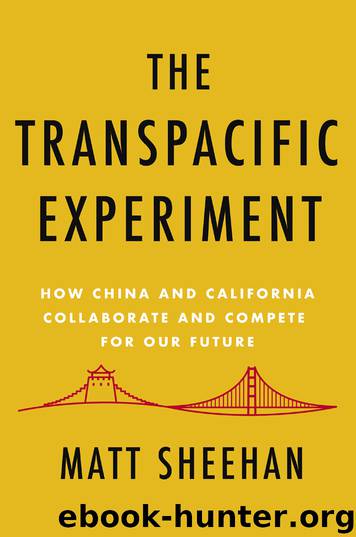The Transpacific Experiment by Matt Sheehan

Author:Matt Sheehan
Language: eng
Format: epub
ISBN: 9781640092150
Publisher: Counterpoint
Published: 2019-05-29T16:00:00+00:00
THE AGE OF COPRODUCTIONS
How exactly was a Hollywood studio supposed to cooperate with a company like Wanda? Coproductions. If American and Chinese teams worked together on a movie, the product could be classified as a “coproduction” between the countries, a distinction that exempts the film from the Chinese government’s quotas on imported movies. It also allows Hollywood studios to take a 43 percent cut of the box office revenue, far higher than the 25 percent allowed on imported films.11
For years, Hollywood had used coproductions as a technical workaround for the quota. They would take on some financing from a Chinese partner to make a purely American film, use that Chinese funding to qualify the film as a coproduction, and skirt the restrictions. But by 2013, Chinese regulators were demanding “real” coproductions: international movies that incorporated Chinese actors, plotlines, or production crews. These films were meant to give Chinese soft power a shot in the arm by placing the country’s own celebrities and scenery at the heart of global blockbusters. China would get itself some much-desired face, and American movies could access the Chinese box office. It sounded like a win-win.
For everyone except the audience, that is. Coproductions were supposed to be a force for transpacific bridge building and cross-cultural creativity. Instead, most of them ended up taking on a Frankenstein-esque quality: including elements of American and Chinese culture, but at home in neither one. They were birthed from an entirely inorganic process, one driven by the pursuit of profit and national pride rather than any allegiance to the story itself. Stephen Galloway, executive editor of The Hollywood Reporter, described the coproduction process as “the yoking together of heterogeneous forces to create a bastard child that no parent could love.”
Instead of building real cross-cultural narratives from the ground up, many Hollywood studios simply took their all-American blockbusters and stuck the required “Chinese elements” somewhere in the script. Chinese actors would make nonsensical cameos. Plots would suddenly take detours that landed the main characters in a Chinese city. And those characters would take long, slow sips of Chinese beverage brands, making sure the logo faced squarely at the camera.
One of the most cringeworthy examples came from Iron Man 3, a movie that was shot as a coproduction but didn’t even end up receiving the final designation from the authorities. The film’s script had been entirely written by Disney and Marvel before being sent to the Chinese partner, DMG Entertainment. DMG responded by telling the L.A. team that it would need actual Chinese elements to earn the coproduction stamp, and so a Los Angeles–based scriptwriter came back with several proposed scenes involving Chinese actors. The two teams finally settled on one that would give maximum face to China in minimum screen time: a Chinese doctor and his beautiful assistant would perform a crucial surgery to save Iron Man.
The surgeon is played by Wang Xueqi, a respected actor if not a household name in China, and the nurse by Fan Bingbing, the most famous actress in the country.
Download
This site does not store any files on its server. We only index and link to content provided by other sites. Please contact the content providers to delete copyright contents if any and email us, we'll remove relevant links or contents immediately.
Pale Blue Dot by Carl Sagan(4616)
The Rules Do Not Apply by Ariel Levy(4523)
Goodbye Paradise(3446)
Ogilvy on Advertising by David Ogilvy(3329)
Delivering Happiness by Tony Hsieh(3283)
Liar's Poker by Michael Lewis(3222)
Into Thin Air by Jon Krakauer(3131)
Purple Cow by Seth Godin(3069)
Rogue Trader by Leeson Nick(2825)
The Social Psychology of Inequality by Unknown(2764)
The Airbnb Story by Leigh Gallagher(2700)
4 - Harry Potter and the Goblet of Fire by J.K. Rowling(2530)
The Mind Map Book by Tony Buzan(2415)
Bossypants by Tina Fey(2373)
All the President's Men by Carl Bernstein & Bob Woodward(2263)
Claridge's: The Cookbook by Nail Martyn & Erickson Meredith(2257)
Six Billion Shoppers by Porter Erisman(2227)
Master of the Game by Sidney Sheldon(2182)
Alibaba by Duncan Clark(1979)
